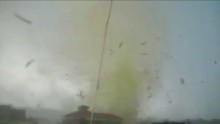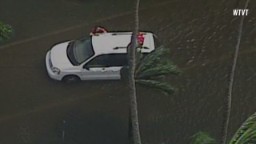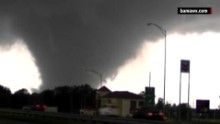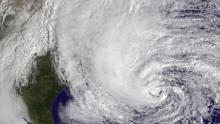http://www.cnn.com/2016/09/14/us/tropical-storm-julia-weather/index.html
A weather rarity: Tropical Storm Julia forms over land
Story highlights
- Tropical Storm Julia forms over Jacksonville
- Julia is the 10th named storm of the year in the Atlantic
- Meteorologists question the storm getting a name
(CNN)While a super typhoon was wreaking havoc in East Asia, a little tropical storm named Julia formed in Florida on Tuesday night.
Yes, "in" Florida. As in, it formed over land -- a very rare occurrence, meteorologically speaking.
The
center of the storm was over the city of Jacksonville when it was given
tropical storm status late Tuesday night -- but that decision caused
some controversy.
'Persistent organization'
At
11 p.m., the National Hurricane Center made the decision to name the
storm after a small area of tropical storm-force winds was consistently
reported for 12 hours.
"Given
this persistent organization, the system is classifiable as a tropical
cyclone and advisories are being initiated on Tropical Storm Julia, the
tenth named storm of the 2016 Atlantic hurricane season," the center
said in its discussion Tuesday night.
Many meteorologists went to Twitter to disagree with the findings.
Some
even wondered why this storm received a name while the devastating
Louisiana floods in August did not meet the criteria for a named storm.
How
can a tropical storm form over land, rather than over warm ocean water?
While Julia's center was slightly inland, there was plenty of
bath-temperature water nearby, which fueled the thunderstorms that
formed its core.
Another interesting phenomenon could also be at play: the "brown ocean"
effect, in which a tropical cyclone gains enough energy from a
saturated Earth to keep a warm core. It's too early for scientists to
know for sure what caused Julia to form over land, but these theories
will certainly be researched as a result of this rare formation.
The forecast for Julia
Julia
is forecast to move slowly to the northeast, and although the winds
will remain strong along the coast, very heavy rains will be the main
threat. Some areas of coastal South Carolina and Georgia could receive
upwards of 10 inches of rainfall in the next couple of days.
Over
the next day, the National Hurricane Center expects Julia to become a
tropical depression. It will ultimately lose all its tropical
characteristics and become a remnant low pressure system.



































No comments:
Post a Comment